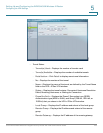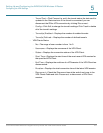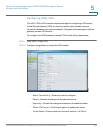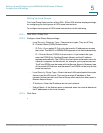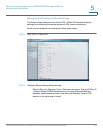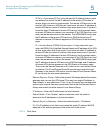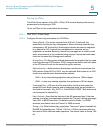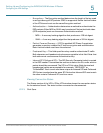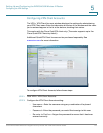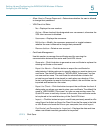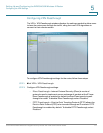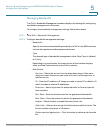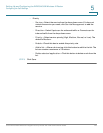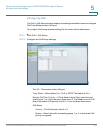
Setting Up and Configuring the WRVS4400N Wireless-N Router
Configuring the VPN Settings
Cisco WRVS4400N Wireless-N Gigabit Security Router with VPN Administration Guide 114
5
• Encryption— The Encryption method determines the length of the key used
to encrypt/decrypt ESP packets. 3DES is supported. Notice that both sides
of the VPN tunnel must use the same Encryption method.
• Authentication— Authentication determines a method to authenticate the
ESP packets. Either MD5 or SHA1 may be selected. Notice that both sides
(VPN endpoints) must use the same Authentication method.
- MD5— A one way hashing algorithm that produces a 128-bit digest.
- SHA1— A one way hashing algorithm that produces a 160-bit digest.
• Perfect Forward Secrecy— If PFS is enabled, IKE Phase 2 negotiation
generates a new key material for IP traffic encryption and authentication.
Note: that both sides must have this selected.
• Preshared Key— This field specifies a key used to authenticate IP traffic.
Both character and hexadecimal value are acceptable in this field. Note: that
both sides must use the same Authentication Key.
• Inbound SPI/Outbound SPI—The SPI (Security Parameter Index) is carried
in the ESP header. This enables the receiver to select the SA, under which a
packet should be processed. The SPI is a 32-bit value. Both decimal and
hexadecimal values are acceptable. for example, “987654321” or
“0x3ade68b1”. Each tunnel must have unique an Inbound SPI and Outbound
SPI. No two tunnels share the same SPI. Notice that Inbound SPI must match
the other router's Outbound SPI, and vice versa
Viewing Connection Status
The Status section of the VPN > IPSec VPN window shows the connection status
for the selected tunnel. The state is either connected or disconnected.
STEP 3 Click Save.



